Potřebujeme váš souhlas k využití jednotlivých dat, aby se vám mimo jiné mohly ukazovat informace týkající se vašich zájmů. Souhlas udělíte kliknutím na tlačítko „OK“.
ASTM E108-11
Standard Test Methods for Fire Tests of Roof Coverings
Automaticky přeložený název:
Standardní metody zkoušek požární zkoušky střešních krytin
NORMA vydána dne 15.1.2010
Informace o normě:
Označení normy: ASTM E108-11
Poznámka: NEPLATNÁ
Datum vydání normy: 15.1.2010
Kód zboží: NS-40369
Počet stran: 13
Přibližná hmotnost: 39 g (0.09 liber)
Země: Americká technická norma
Kategorie: Technické normy ASTM
Kategorie - podobné normy:
Anotace textu normy ASTM E108-11 :
Keywords:
burning brands, classification, flying brand, intermittent flame, rain test, roof coverings, roof deck, spread of flame: Burning brand test, Fire testing--building materials, Flying brand test, Heating tests--building products, Intermittent flame exposure test, Rain, Roofing materials/applications, Weathering (building materials/applications), ICS Number Code 13.220.50 (Fire-resistance of building materials and elements), 91.060.20 (Roofs)
Doplňující informace
| Significance and Use | ||||||||||||||||||||||||||||||
|
The test methods described herein are intended to provide a basis for relative comparison of roof coverings. The test methods include simulated fire exposure to the outside of the roof coverings, and, where applicable, a determination as to whether the fire performance characteristics of the roof coverings will be adversely affected by prolonged exposure to rain. These test methods measure the surface spread of flame and the ability of the roof covering material or system to resist fire penetration from the exterior to the underside of a roof deck under the conditions of exposure. These test methods also provide criteria to determine if the roof covering material will develop flying burning material, identified as flying brands, when subjected to a 12-mph (5.3-m/s) wind during the simulated fire exposure tests. These test methods do not necessarily illustrate the expected performance of roof coverings under all actual fire conditions, but they do provide a basis for comparing roof covering materials when subjected to fire sources that are described herein. These test methods do not provide any basis for determining the fire resistance characteristics when exposed to a fire originating in the building to which the roofing material is applied. The test methods described herein involve calibrating the test equipment using a calibration deck inclined at a slope of 5 in. per horizontal ft (0.416:1). The tests described herein are performed on test decks inclined at slopes up to and including 5 in. per horizontal ft. The severity of the test exposure decreases as the slope of the test deck decreases below 5 in. per horizontal ft. |
||||||||||||||||||||||||||||||
| 1. Scope | ||||||||||||||||||||||||||||||
|
1.1 This fire-test-response standard covers the measurement of the relative fire characteristics of roof coverings under simulated fire originating outside the building. It is applicable to roof coverings intended for installation on either combustible or noncombustible decks when applied as intended for use. The following test methods are included: 1.1.1 Intermittent flame exposure test. 1.1.2 Spread of flame test. 1.1.3 Burning brand test. 1.1.4 Flying brand test. 1.1.5 Rain test. 1.2 Three classes of fire test exposure are described: 1.2.1 Class A Tests are applicable to roof coverings that are effective against severe test exposure, afford a high degree of fire protection to the roof deck, do not slip from position, and do not present a flying brand hazard. 1.2.2 Class B Tests are applicable to roof coverings that are effective against moderate test exposure, afford a moderate degree of fire protection to the roof deck, do not slip from position, and do not present a flying brand hazard. 1.2.3 Class C Tests are applicable to roof coverings that are effective against light test exposure, afford a light degree of fire protection to the roof deck, do not slip from position, and do not present a flying brand hazard. 1.3 The values stated in inch-pound units are to be regarded as standard. The values given in parentheses are mathematical conversions to SI units that are provided for information only and are not considered standard. 1.4 This standard is used to measure and describe the response of materials, products, or assemblies to heat and flame under controlled laboratory conditions, but does not by itself incorporate all factors required for fire hazard or fire risk assessment of the materials, products or assemblies under actual fire conditions. 1.5 This standard does not purport to address all of the safety concerns, if any, associated with its use. It is the responsibility of the user of this standard to establish appropriate safety and health practices and determine the applicability of regulatory limitations prior to use. 1.6 The text of this standard references notes and footnotes that provide explanatory information. These notes and footnotes, excluding those in tables and figures, shall not be considered as requirements of this standard. |
||||||||||||||||||||||||||||||
| 2. Referenced Documents | ||||||||||||||||||||||||||||||
|
Podobné normy:
Historická
1.4.2014
Historická
1.1.2013
Historická
1.7.2011
Historická
1.8.2013
Historická
15.7.2013
Historická
1.8.2013


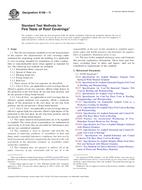
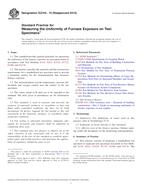 ASTM E2749-10(2014)..
ASTM E2749-10(2014)..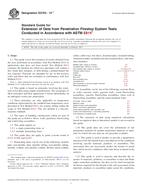 ASTM E2750-13e1
ASTM E2750-13e1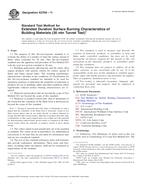 ASTM E2768-11
ASTM E2768-11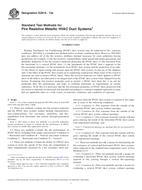 ASTM E2816-13a
ASTM E2816-13a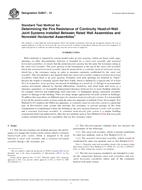 ASTM E2837-13
ASTM E2837-13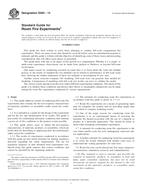 ASTM E603-13
ASTM E603-13
 Cookies
Cookies
